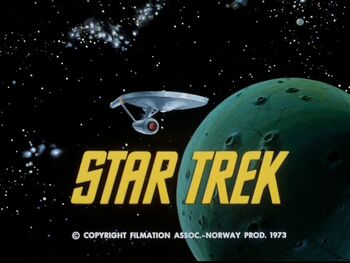By: Rachel Whalen

Image source: https://memory-alpha.fandom.com/wiki/Star_Trek:_The_Animated_Series
Space, the final frontier. Star Trek explores the universe and the potential consequences of a post-scarcity society. This fictional world has “eliminated hunger, want, [and] the need for possessions”[1] and developed a society that does not rely on money.[2] People in this sci-fi world have access to any resources that they need through the use of replicators.[3] This unlimited supply of resources removes much of the incentive for people to work and create, and the lack of scarcity would require a whole new approach to economics.[4]
Intellectual property (IP) rights already create artificial scarcity where scarcity would not normally exist.[5] The ideas and creations protected under IP rights would otherwise be freely available.[6] IP law restricts the proliferation and copying of information in order to provide an incentive for creativity.[7] Historically, developing an idea or creation has required resources such as raw materials and human labor. Creators and innovators relied on IP law to recoup their costs and protect their creations. “It is cheaper to be an imitator than an inventor,” so an incentive is needed to encourage innovation.[8]
However, in the case of a post-scarcity world, the costs to innovate would be very small if any. Without the scarcity of raw materials and time, people in Star Trek’s utopia can focus on creation and individual fulfillment.[9] The costs to create and distribute content would be almost nonexistent, so IP law would not be as necessary to recoup costs of creation when creation is free.
Furthermore, the foundation that monetary enticement is required to promote innovation has been placed into question. People may not be as motivated to create by external rewards as internal or problem driven gratification.[10] For example, the development of the internet has revealed an astonishing amount of people creating content, at their own cost, for free distribution. These people simply want to share their creations with the world,[11] and with a low cost of creation, they would have even greater access to innovate. In this case, the protections provided under IP law would be less important as the incentive to innovate is no longer as necessary.
On the other hand, content creators may still desire IP protections for them to control the use and distribution of their content. As economists Michele Boldrin and David K. Levine pointed out, “[I]ntellectual property law is really about . . . your right to control my copy of your idea.”[12] Creators may want to protect the reputation of their work and be acknowledged as the creator.
Star Trek represents a world without scarcity and without the related costs for creation and distribution of ideas. IP law has traditionally helped creators recoup the costs of creation in order to promote innovation over replication. In a post-scarcity world, the costs for creation are almost nonexistent as materials are freely available. IP law has also stood on the presumption that creators want monetary rewards for their work, but the plethora of people creating and freely distributing content on the internet suggests a different motivation. Content creators want to share their creations and be acknowledged. Still, without the initial costs of creation and distribution, the incentive provided by IP protections drops in importance as more people have access to innovate. While IP law has a place in a post-scarcity world, it is not likely to rely as heavily on IP protections.
[1] See Jonathan Newman, Star Trek Is Wrong: There Will Always Be Scarcity, Mises Wire, Oct. 20, 2015, https://mises.org/library/star-trek-wrong-there-will-always-be-scarcity.
[2] See Rick Webb, The Economics of Star Trek, Medium, Nov. 6, 2013, https://medium.com/@RickWebb/the-economics-of-star-trek-29bab88d50.
[3] See Peter Frase, Anti-Star Trek: A Theory of Posterity, Dec. 14, 2010, http://www.peterfrase.com/2010/12/anti-star-trek-a-theory-of-posterity/.
[4] See Mark A. Lemley, IP in a World Without Scarcity, 90 N.Y.U.L.R. 460 (2015).
[5] See id.
[6] See id.
[7] See id.
[8] Id.
[9] See Webb, supra at 2.
[10] See Lemley, supra 4.
[11] Id.
[12] Frase, supra at 3.
